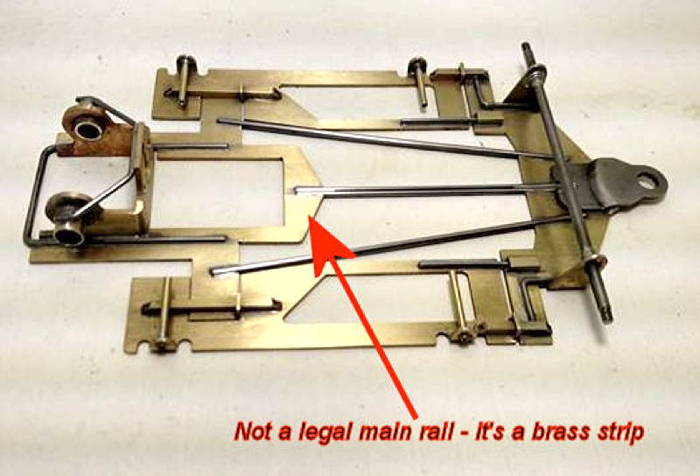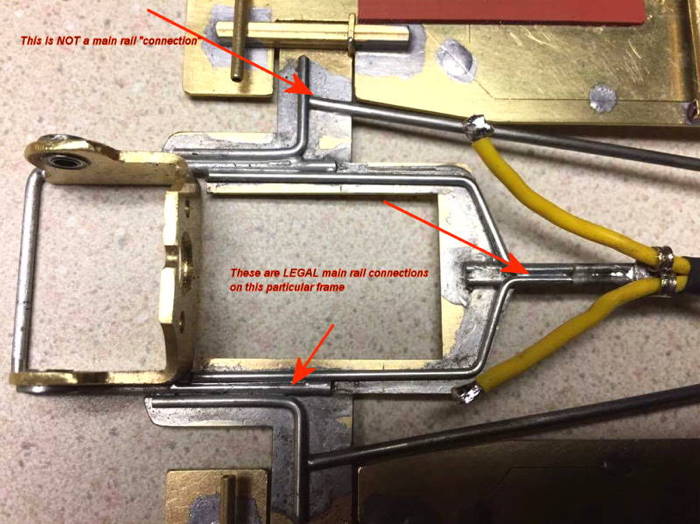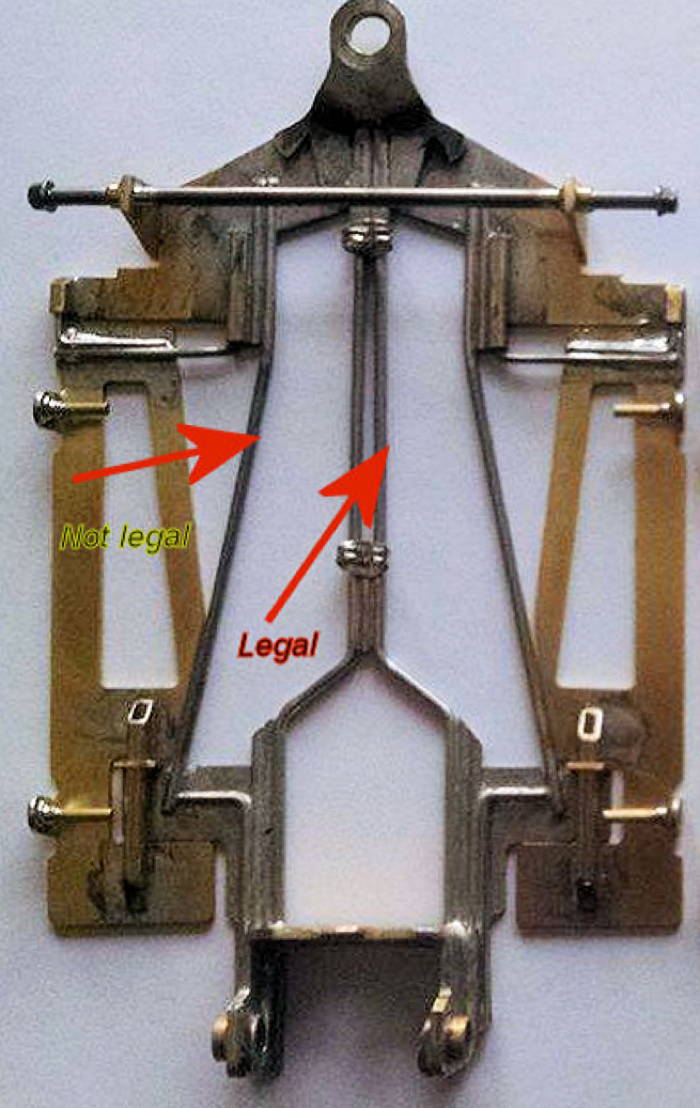A question has been raised about the legality of the top chassis show below. The answer is that it is not legal per the IRRA chassis rule cited below:
"3i. Wire or tubing rails must connect the front and rear sections of the chassis. Using metal strip for this purpose is not permitted. A rail is defined as that which connects the motor bracket to the front of the chassis."
To be considered as main rails, whether center or outer rails, they must solidly connect the motor bracket and the front of the chassis (nosepiece). For example, center rails that are inserted into tubes in the nosepiece (but are not soldered into the tubes) do not qualify as main rails.
Main rails are there to support the frame. In the top picture below there are no main rails connecting the nosepiece to the motor bracket so the main rails cannot support the frame.
Note that main rails do not have to be one-piece, but multiple pieces of wire or brass tubing, or rod, must be connected with solder joint lengths of at least .250 inches to be considered permissible main rails.

This chassis does not have complete main rails connecting the motor bracket to the front of the chassis.

By adding additional wire with at least .250" long solder joints, this chassis does have a complete main rail structure.
Further clarification of the main rail issue...
The IRRA® wishes to show how to construct this new chassis so it complies with the long-standing IRRA® chassis rules, rather than have racers purchase something they believe is legal and later find out at tech it is not.
An additional restriction being imposed is that bracing or partial rails soldered atop brass plate to "complete" a main rail structure can be no smaller than .047" diameter.
Clarification of main rails on the original chassis design:

Here are illustrations showing a few ways how this new chassis kit can be built to comply with the IRRA® chassis rules for main rails.

(Posted for the IRRA® BoD by Tony Przybylowicz)
























